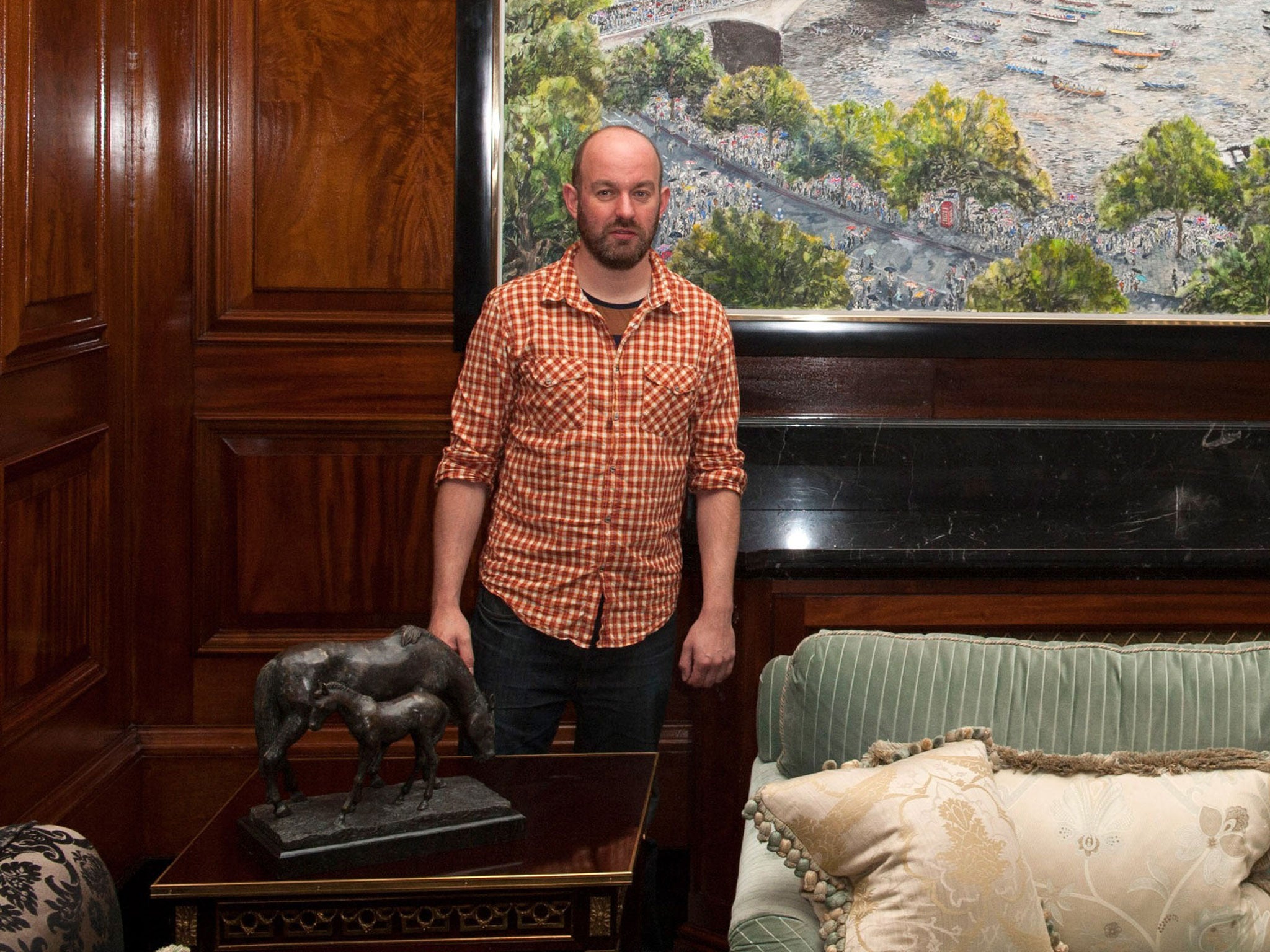On the Front Foot: Durham look to left field to capture their place in history

Durham are plainly aware of the historic nature of this Ashes Test match. Sensing perhaps that the like may not pass this way again, they are intent on seeing that it is properly commemorated.
David Downes, the meticulous and inspired landscape artist who drew the buildings of the London Olympics as they developed, has been commissioned to capture the ground in all its glory. "This is an opportunity to make a lasting impression of a truly significant occasion in the life of this region," he said.
In some ways, Downes is an odd choice. He is a Londoner, via Suffolk, who has no particular affinity with the north east and it must have been tempting for Durham to hire a painter from the region. But his track record is enviable and apart from his Olympics work he was once BBC artist in residence.
Durham are making the most of his involvement by offering limited-edition prints of his work to those who donate to their new First Class Futures programme, designed to raise £1 million in the next year for a new nursery ground.
If Downes was a slightly surprising appointment, the American-born former basketball player, Ben Markovits, was also a left-field choice as Ashes writer in residence. Markovits, who is new to the game, will write a piece detailing his Ashes experience, to be revealed at the Durham Book Festival in October. He is on this year's Granta list of best young British novelists and initial reports by Durham suggest that "he brings some fascinating new perspectives".
There is a robust determination hereabouts to ensure that they make the most of this sporting opportunity and also to ensure that it is recognised when future big games are allocated.
Regeneration game
Until 20 years ago the site on which the Fourth Test is being played was a patch of scrubland off the A1(M). It has become part of a modern sporting complex, but the question is what to call it?
The charming original name was the Riverside, by which all locals still know it. When ground-naming rights became necessary two years ago there was a change. But instead of incorporating the old name (as The Oval and Old Trafford have done) Durham went for a complete rebrand. The venue, for the moment, is a mouthful – officially the Emirates Durham International Cricket Ground. It probably will not last.
The Kennington Oval is in its fourth manifestation, renewed more often than Dr Who. There is no truth in the suggestion that it is soon to be the Peter Capaldi Oval.
Experience counts
This is the most experienced England team to have played in a Test match. Between them the players have 650 caps, 11 more than the team which played at Old Trafford, which was 11 more than the team at Lord's. In these days of continuity, continuity, continuity experience is easy to come by.
Of the 20 most experienced England sides, 19 took the field in the last two years. The exception is the team which played at The Oval against Australia in 2001. It is peculiar that it should be as high as 20th since it contained Usman Afzaal and James Ormond, who won only three and two caps respectively.
Ashes on safe ground
This is the 15th ground on which an Ashes Test has been played, the ninth in Britain and the second new venue in four years following the match at Cardiff in 2009. All except the Brisbane Exhibition Ground, where Don Bradman made his debut and which staged two Tests, and Bramall Lane, Sheffield, are still in use.
Join our commenting forum
Join thought-provoking conversations, follow other Independent readers and see their replies
0Comments